As the capital city of China, Beijing is an ever-bustling city with rich historical and cultural significance. The city is home to the famous Great Wall, and Forbidden City along with exquisite food, culture, and other famous landmarks. Food lovers, adventure seekers, history enthusiasts, and other tourists will have no shortage of attractions to visit. With the help of this guide, all travelers will have access to the ins and outs of the city along with ideal hidden markets and hutongs. Beijing has a unique blend of traditional and modernized innovations, and through this guide, you will glimpse into the rich heritage and charm it offers.
What Are the Top Attractions in Beijing?
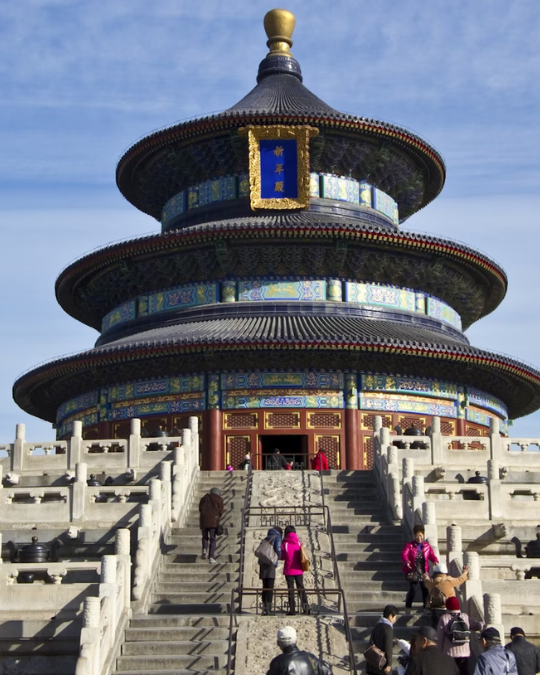
What Are the Top Attractions in Beijing
Beijing is one of the most populous cities in the world and has retained some quasi relics of its history, which has made it lively and attracted tourists. The famous sites to visit are the Great Wall of China where you can hike on the maintained parts of the wonder and the Forbidden City which is an imperial palace with a vast area and has multiple beautiful structural and culturally rich palaces within it. Tiananmen Square is a famous site too because it is surrounded by other places such as the National Museum of China and the Mausoleum of Mao Zedong. For relaxing, you can visit the Temple of Heaven, a religious complex built inside a park, or the Summer Palace well known for having numerous lakes, gardens, and pavilions. Furthermore, you should not forget to stroll through the alleyways and the old traditional houses or courtyard buildings in the hutongs, which display the Beijing local culture and lifestyle.
Exploring the Forbidden City: A Step Back in Time
In the center of Beijing lies the Forbidden City, an expansive palace complex that housed Chinese emperors and their families for around 500 years during the Ming and Qing Dynasties. It was built from 1406 to 1420 and covers an area of 180 acres. The Forbidden City has over 980 existing buildings that showcase elaborate traditional Chinese architectural design. This complex is a UNESCO World Heritage Site and continues to be a representation of China’s ancient civilization as well as its culture.
Key Features and Highlights
- Architectural Layout: The Forbidden City reflects traditional Chinese cosmological principles, with a symmetrical design aligned along a north-south axis to embody harmony and balance.
- Materials and Craftsmanship: The structures were built using millions of bricks, golden ceramic tiles, and rare wood. The roofs are mostly yellow-glazed tiles, signifying imperial power.
- Notable Sections:
- The Outer Court housed ceremonial and political spaces, including the Hall of Supreme Harmony, used for significant imperial events.
- The Inner Court was the private living quarters for the emperor, empress, and concubines, with spaces like the Palace of Heavenly Purity.
- The Imperial Garden served as a retreat, offering serene pavilions, lush greenery, and rock formations.
Technical and Historical Details
- Dimensions:
- Length of outer wall: 961 meters (3,153 feet)
- Width of outer wall: 753 meters (2,470 feet)
- Height of walls: 10 meters (33 feet)
- Moat width: 52 meters (171 feet)
- Number of Rooms: Approximately 8,700 measured under strict classification systems.
- Construction Time: 14 years, employing over a million workers.
Planning Your Visit
The Forbidden City is now accessible to the general public and has modern facilities as well as historical exhibits. Visitors are advised to make reservations in advance and set aside at least half a day for the visit. The suggested approach begins with the Meridian Gate, moves along the central axis, and finishes with the Gate of Divine Prowess. Fulfilling your expectations of this place will be achieved by renting audio guides, or you may choose to be accompanied by a guide. It is essential to wear cozy walking shoes as this stunningly beautiful area requires a lot of walking.
Walking through the Forbidden City is one of the few chances you will have to marvel at the relics of China’s imperial history.
A Journey to the Great Wall of China
A trip to the Great Wall of China is unlike any other, and visiting this landmark is certainly an experience I will cherish forever. I opted to visit the Mutianyu part of the wall because of its stunning views and amazing structure. Not only does this section of the wall have fewer tourists compared to Badaling, but it also enables me to take in its beauty at my own speed. I found out that the Great Wall is a staggering 13,000 miles in length and was originally built to defend China from attacks. I marveled at the work and manpower needed to build such a landmark whilst walking on its ancient bricks and climbing its steep stairs. Wear comfortable shoes and be hydrated as the hike requires a lot of energy. As a piece of advice, every angle of this marvel should be captured through a camera so make sure to bring one along!
Uncovering History at the Temple of Heaven
The Temple of Heaven in Beijing is an exemplary piece of the Ming dynasty’s architecture and stands as a representation of Chinese culture. Constructed in the beginning of the 15th century, this location was used by emperors of the Ming and Qing dynasties to pray and conduct rituals for favorable harvests. Its design expresses the relationship between heaven and earth since the square base symbolizes earth, while the circular Hall of Prayer for Good Harvests represents the heavens. The remarkable symmetry and acoustics of the structure serves as a testament to the artisan’s skills. Walking through the temple grounds exposes the stunning architecture and hints at the culture of imperial China.
How to Spend Day 1 in Beijing?
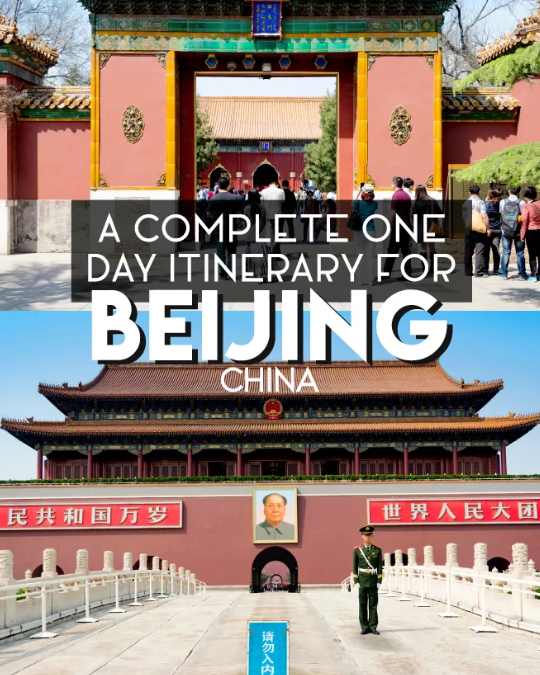
How to Spend Day 1 in Beijing
Kick off your morning with the breathtaking scenery of Beijing, commencing with a visit to the Forbidden City. Make sure to get there as early as possible so you can enjoy exploring the exquisite and rich history of its palaces, courtyards, and relics without being interrupted by the large crowds. Afterward, head to the Temple of Heaven and appreciate its exquisite contemporary architecture. At this temple, you can enjoy observing locals performing tai chi and other traditional art forms. A restaurant nearby serves delicious local dishes, so make sure to grab lunch before heading out to the hutongs. As you walk through the historic alleyways, make sure to capture the beauty of the courtyard homes and appreciate the local culture. Finally, indulge in the majestic panoramic views the park offers you at Jingshan Park. From afar, you can observe the stunning city along with the Forbidden City as the sun sets.
Morning Walk through Tiananmen Square
Strolling through Tiananmen Square in the morning gives the people an opportunity to see China’s rich cultural and political history. The square is located centrally in Beijing and has a size of 440,500 square meters which makes it one of the biggest public squares globally. Apart from being an architectural wonder, this place also serves as an emblematic arena for numerous historical incidents. Start your Walk by taking note of the Flag Raising at the start of dawn which gathers many spectators. The People’s Liberation Army conducts the ceremony, and it is executed with accuracy and pride in the nation.
Just outside the square, there are many other iconic places to the east and west. The southern portion of the square has the tomb of Mao Zedong, where people can see his embalmed body. On the Northern side of the square, you will see the Tiananmen Gate with a portrait of Chairman Mao Zedong. On the western side, The Great Hall of People serves as the legislative and ceremonial working place, while to the East side, the National Museum of China portrays the history and culture of China. These museums open in the afternoon while the square has open hours throughout the day. It’s recommended to arrive early in the morning to avoid the heavy traffic of visitors.
If you plan to visit this iconic location, be sure to wear comfortable shoes, have your ID on hand, and, if possible, plan your visit for a clear day so you can appreciate the surrounding architecture.
Visit the National Museum of China for Cultural Insights
My visit to the National Museum of China was an unforgettable experience. The museum, which is located on the eastern side of Tiananmen Square, preserves ancient and modern Chinese civilization and culture – spanning thousands of years. I had to present my passport to enter as the exhibitions were free of charge. The museum houses a wide array of exhibitions, including ancient bronze and pottery wares alongside modern artistic decorations. Since the museum is enormous and filled to the brim with countless exhibits, I set aside several hours for my visit. To accommodate the aforementioned tasks, I arrived at the museum in the morning, as it was less crowded during that time. For those looking into China’s rich history, this is one particular location I highly recommend visiting.
Afternoon Tour of the Imperial Palace
The Imperial Palace was my next location and its visit during the afternoon was breathtaking. The intricately detailed architecture, beautiful art, and wide open courtyards were a testament to how ancient China was. Here too, the guided tour proved helpful as it told me detailed stories and background information about the place I was visiting, adding to my knowledge. Roaming around the palace, I could feel myself stepping into the shoes of the emperors who profoundly ruled the mighty land that once was. Given the sheer size of the palace, I quickly discovered And followed the main attractions along with the Imperial Garden and Hall of Supreme Harmony, so that my time spent there was fruitful.
What Should You Do on Day 2?
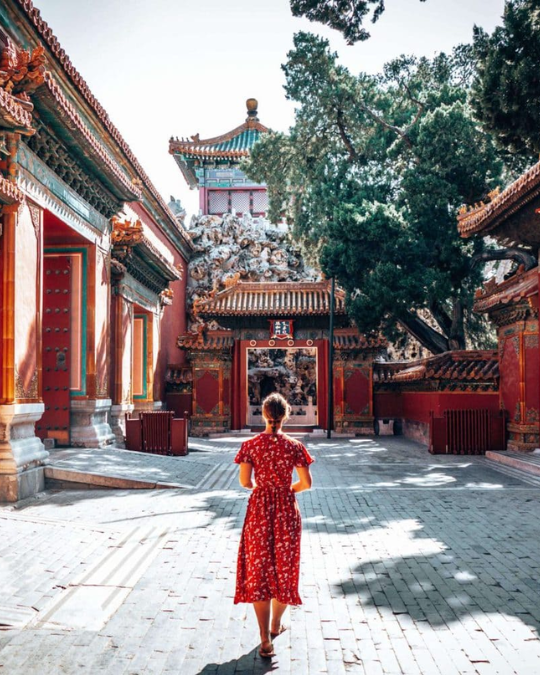
What Should You Do on Day 2
To start your day, have a delightful stroll in the morning along the Great Wall of China at Mutianyu which is a bit less explored as well as a magnificently restored section of the wall. Later in the day, after lunch, you can travel back to the city and visit the Summer Palace where you can appreciate its lovely gardens, peaceful lakes, and some exotic traditional structures. Finally, complete your day by watching a Peking Opera show so that you can appreciate and understand the deeply rooted cultural heritage of Beijing.
Experience the Magnificence of the Summer Palace
Located to the northwest of Beijing, The Summer Palace is another UNESCO World Heritage Site and a wonderful work of Chinese landscape art. It has an area of 2.9 square kilometers over which Kunming Lake lies along with a hill, Longevity Hill, with a total of four kilometers of walking paths outlining it. It was first constructed in 1750 and later modified after getting ruined, the Summer Palace was the retreat home of royals in the Northern Qing Dynasty which encompassed traditional crafts, buildings, and artistic environment. The Summer Palace is one of the biggest and most beautiful parks in Beijing, and it incorporates the UNESCO of the Summer Palace.
When traveling between the buildings, tourists can walk in the green gardens decorated with traditional Chinese pavilions, bridges, and temples. The exquisitely painted panels decorated the famed Long Corridor, which, along with the Tower of Buddhist Incense, also has the Temple of Longevity. Anton Hohler also created a marble boat on Kunming Lake, which replaced the previously made wooden one. The Feng Shui design of the Summer Palace reflects the Chinese philosophy which seeks balance. To understand the essence of China’s culture and history, the Summer Palace is unskippable.
Relax in the Imperial Garden
One of the rest points for meditation is Imperial Garden which is situated in the Summer Palace. This garden is well-managed and it has classical Chinese-style landscaping which includes courtyards, ancient trees, and pathways made of stones. People can appreciate well-designed buildings and beautiful nature at the Wisteria Pergola as well as at the Hall of Serenity. The combination of plants and buildings shows the artistic nature and the beauty of nature which makes the Imperial Garden a wonderful place to visit for cultural admiration while relaxing.
Try Authentic Peking Duck for Dinner
One other important excursion that must not be missed when in Beijing is the real Peking Duck. This unique dish famous for its tender meat and mouth-watering skin is perfected through a special roasting technique using a traditional oven built out of bricks. To achieve the taste and texture that it is famous for, the duck goes through a seasoning and air-drying process. It is served with pancakes and sweet bean sauce along with fresh vegetables like cucumber and scallions. For the complete experience, you must ensure the restaurant sources its ducks locally and uses the correct roasting methods to achieve the ideal temperature of 250 degrees Celsius.
How to Make the Most of Day 3?
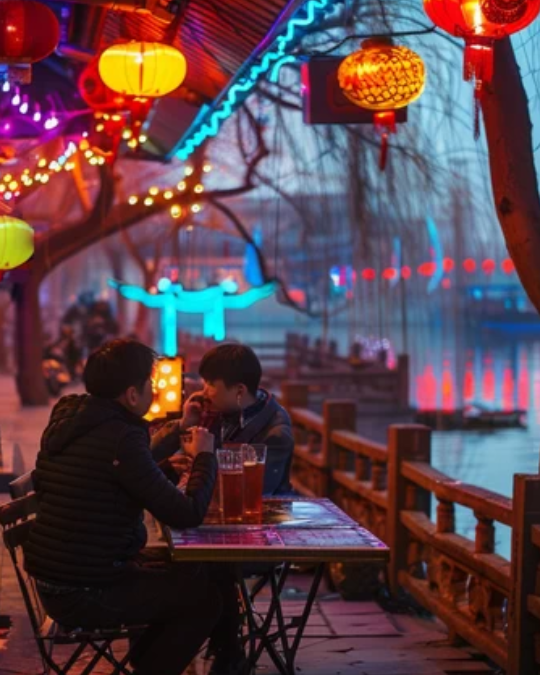
How to Make the Most of Day 3
For Day 3, wake up early and enjoy breathtaking views of the Summer Palace’s exquisite gardens and tranquil lakes. These traditional views are usually accompanied by stiff crowds, so arriving early is essential. In addition, ensure to visit the traditional pavilions and scenic overlooks. Grab lunch at a nearby restaurant to enjoy Peking Duck and its signature crispy skin and tender meat. In the afternoon, unwind at the Imperial Garden and marvel at nature’s beauty. Finally, conclude the day with a Peking opera performance which wonderfully fuses art, history, and entertainment.
Take a Day Trip to the Mutianyu Section of the Wall
Crowned as one of the most stunning and well-preserved portions of this ancient monument, the Great Wall’s Mutianyu section is located roughly 70 kilometers from central Beijing, making it approximately 45 minutes away by car. Unlike other heavily populated portions of the Great Wall of China such as Badaling, this section possesses a calm atmosphere, making it an ideal choice for travelers seeking a more peaceful experience. Private cars, public transport, bus 867, and group tours are generally available for Mutianyu.
Notable for its rich natural beauty, this section combines dense forests and orchards which create splendorous scenery during all seasons, especially fall when the colors are simply vivid. Visitors can marvel at 23 fully restored watchtowers, which visitors can reach by chairlift, cable car, or through hiking. Everyone will enjoy toboggan sliding down the mountain, a unique way to descend the Great Wall that makes the experience a lot of fun. Take into consideration that visiting other notable spots on the Great Wall may take an entire day if you wish to spend four or more hours soaking in the amazing views and historical significance of this marvelous UNESCO World Heritage Site.
Visit the Largest Confucian Temple in China
I have to say that visiting the biggest Confucian Temple in China, the Temple of Confucius, located in Qufu was amazing. The sprawling complex honoring Confucius features traditional Chinese architecture and exquisite carvings, as well as more than a hundred halls, pavilions and gates. While walking through the site, I observed its traditional features and understood the core values of Confucianism as well as its historical importance in China. The temple, in conjunction with the adjacent Cemetery of Confucius and the Kong Family Mansion, is part of a UNESCO World Heritage Site, which makes it a marvelous location to visit for people comparably interested in history and philosophy. My recommendation on time spent is a few hours if one is to appreciate the serenity and richness of culture the site has to offer fully.
Evening Stroll at the Night Market
When I went to the night market it was an experience full of vibrant sights, sounds, and tastes, unlike anything before. The night market, situated deeper in the city, is a lively place where tourists and locals come to enjoy the delectable street food and local culture, unique items as well as shopping. The market offered an impressive variety of cuisines ranging from fresh grilled skewers, to steaming bowls of noodles topped with sweet delicacies like bubble tea and fried ice cream. The ambience of the market was fresh and a majority of the stalls prepared the dishes right in front of the customers.
In addition to the food, the night market also had vendors who sold clothes, handmade crafts, and souvenirs at prices that could be bargained for, making shopping enjoyable and affordable. As you walked around the stalls, you were entertained by street performers and the sound of live music. If you plan on visiting, head there a bit after it opens so you do not get stuck in the heaviest crowds. Also, many vendors do not accept cards, so make sure to bring cash. It is also recommended that you wear shoes that are comfortable because the markets can stretch out for multiple blocks.
What Are the Best Times to Visit Beijing?
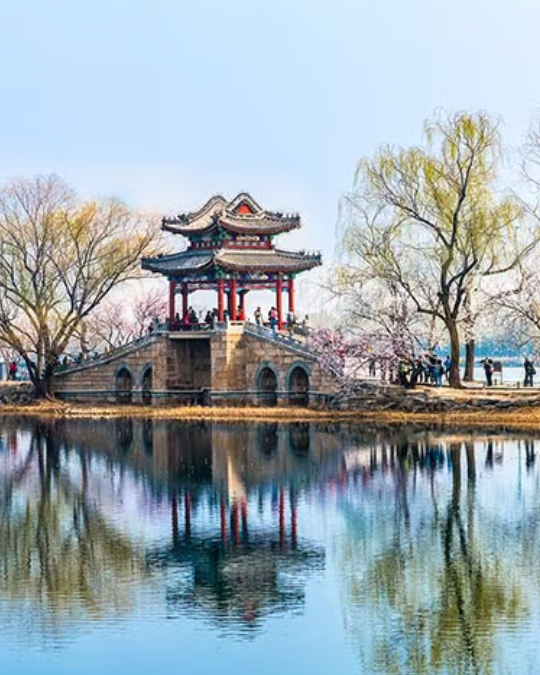
What Are the Best Times to Visit Beijing
The optimal times for a trip to Beijing would be the spring months (March to May) and autumn months (September to November). During these seasons visitors can expect pleasant temperatures, clear weather, and comfortable conditions, which makes it ideal for sightseeing and outdoor activities. For spring, blooming flowers and blossoming gardens are to be expected while in autumn, crisp air combined with brightly colored foliage is present. As an added benefit, these times tend to stay away from both the harsh heat of summer and the cold winter months, further improving the travel experience.
Understanding the Climate for Your Beijing Trip
The choice of the best time to visit Beijing changes depending on your personal needs, however, I suggest spring (March to May) and autumn (September to November) as the optimal seasons. As for spring, the average temperature ranges between 50°F to 70°F (10°C to 21°C), and for autumn it would be 45°F to 68°F (7°C to 20°C). During these seasons, the region experiences clear skies along with low levels of humidity making the outdoors a more pleasant place to be in. In addition to this, spring exhibits stunning floral arrangements while gorgeous autumn foliage makes an appearance in autumn. It is best to avoid summers (June to August) if heat isn’t your cup of tea since the temperatures tend to go past 90°F (32°C) along with humidity levels. Winter (December to February) is also not that friendly as the temperatures can sink below 32°F (0°C).
Tips for Avoiding Tourist Crowds
To mitigate potential tourist congestion in Beijing, consider scheduling your visit for the off-peak seasons, such as late fall (mid-October to early November) and early spring (March to mid-April). These periods tend to be significantly less crowded than the high summer months and other notable holidays. In addition, weekdays are considerably less busy than weekends and so are popular attractions, such as the Forbidden City and the Great Wall, when they are opened to the general public in the mornings and in the late afternoons. These time frames can be ideal for contemplating your itinerary.
When searching for lesser-known sections of the Great Wall, prioritize Jiankou and Simatai, rather than the frequently crowded Badaling and Mutianyu sections. One can similarly discover great cultural experiences in some of the quieter districts away from the prominent landmarks, like the Jeep hutongs or the798 Art District.
To further optimize your visit to, for example, the Forbidden City, booking tickets online in advance will save you a considerable amount of time when it comes to waiting. Another way to optimize your experience while minimizing your exposure to crowds is by traversing with a private tour guide during non-peak hours.
Where to Stay and How to Get Around Beijing?
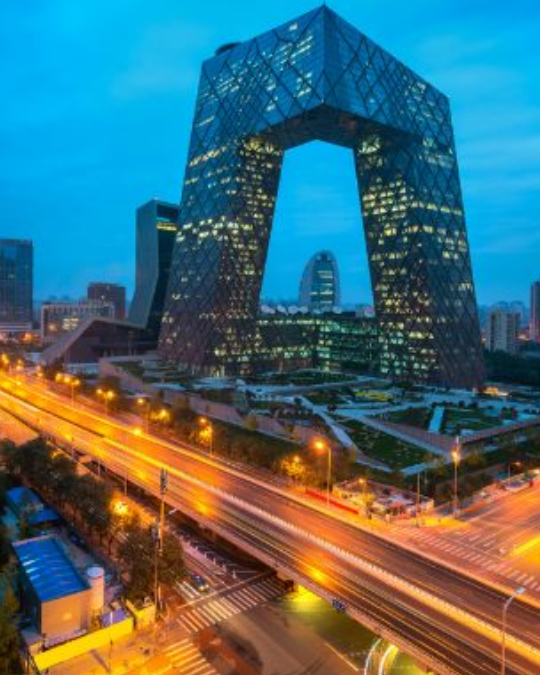
Where to Stay and How to Get Around Beijing
While planning for your stay in Beijing, consider making reservations in Dongcheng or Chaoyang Districts which are central, making transportation to various sights easier, and also having restaurants nearby. For a more cultural stay, have a look at hutong courtyard hotels. There is a wide range of hostels for budget travelers, as well as luxurious hotels that cater to high-end tourism.
Beijing is simple to navigate owing to the comprehensive public transport systems, with the extensive subway being inexpensive and connecting all major tourist attractions. Taxis and Didi are easy to use, but during rush hour, people may get stuck in traffic. Riding a bike or renting a bike is another leisurely way to see the city. For an unconventional option, try riding a rickshaw through the old hutongs.
Accommodation Options in Centre of Beijing
While traveling to Beijing, it is advisable to lodge in areas with Dongcheng and Chaoyang Districts. These areas give easy access to notable tourist sites like the Forbidden City, Tiananmen Square, and Wangfujing Shopping Center. Lodging options within these districts appeal to a range of different tastes and budgets.
For authentic experiences, there are boutique hotels or guesthouses within the hutongs where traditional courtyard architecture is blended with modern construction. Luxury travelers are well provided with five-star hotels like The Peninsula Beijing or Waldorf Astoria Beijing which are known to offer remarkable service and comfort. These, however, do tend to be more expensive. More economical travelers have more than few options like 365 Inn and Peking Station Hostel which provide good service at a much better price point. Families with children or groups may elect to book serviced apartments that afford greater flexibility with their kitchenettes and additional space.
Best Way to Get Around Using the Beijing Daxing International Airport
Beijing Daxing International Airport (PKX), known for its advanced design and efficiency, offers several convenient transportation options to reach the city center:
- Airport Express Train
- Travel Time: Approximately 20–35 minutes to downtown areas (e.g., Caoqiao Station).
- Cost: Around ¥35 ($5) per person.
- The Daxing Airport Express connects directly to the Beijing subway system, making it a fast and seamless option for travelers.
- Intercity Rail
- Route: Links Daxing Airport with nearby cities like Langfang and Xiong’an.
- Ideal for those heading to destinations beyond Beijing.
- Taxi/Car Service
- Travel Time: 50–90 minutes, depending on traffic.
- Cost: Approximately ¥150–¥300 ($20–$40).
- Widely available and comfortable for door-to-door service, though traffic delays can occur, especially during peak hours.
- Airport Shuttle Buses
- Travel Time: 90 minutes or more, depending on the route.
- Cost: Around ¥30–¥40 ($4–$6) per person.
- Multiple routes serve key locations, such as Beijing Railway Station, Beijing West Railway Station, and major hotel zones.
- Car Rentals
- Travelers preferring flexibility and can rent a car from agencies located at the airport.
- Ensure familiarity with local driving regulations and traffic conditions before choosing this option.
For most visitors, the Airport Express Train offers the most efficient and cost-effective way to travel, while taxis or private car services offer convenience for those with more luggage or specific destinations in mind.
Travel Tips for Navigating the Airport Express Train
- Buy Tickets in Advance or On-Site
Tickets can be purchased easily at ticket counters or automated machines at the stations. Payment can usually be made with cash, credit/debit cards, or digital wallets like Alipay or WeChat Pay.
- Check Operating Hours
The Airport Express Train typically operates from early morning (around 6 AM) to late evening (around 11 PM), but it’s wise to verify the schedule in advance to avoid delays.
- Pack Lightly
While the train is equipped to handle luggage, space during peak travel hours may be limited. It’s more convenient to travel with compact, portable bags.
- Look for Clear Signage
Stations provide clear multilingual signage, making it straightforward for non-Mandarin speakers to locate platforms and exit points.
- Plan Your Stops
The train connects Beijing Capital International Airport with key stops such as Dongzhimen and Sanyuanqiao. Familiarize yourself with the transfer options at these stations to seamlessly continue your trip.
- Time Your Travel Wisely
Allow extra travel time during peak hours or major holidays, as the train may be busier than usual.
Following these tips can ensure a smooth and stress-free experience when using the Airport Express Train during your visit to Beijing.
References
Frequently Asked Questions (FAQ)
Q: What are the best things to do in Beijing for a first-time visitor?
A: For first-time visitors, exploring the Forbidden City and Tiananmen Square is essential. Other top attractions include the Great Wall of China, the Summer Palace, and the Temple of Heaven. Don’t miss visiting the Lama Temple and trying the traditional Beijing dish, Beijing roast duck.
Q: How can I best experience traditional Beijing?
A: To experience traditional Beijing, visit the hutongs, which are the narrow alleys and courtyard residences that showcase old Beijing life. You can also attend a Beijing opera performance and try traditional Beijing cuisine at local eateries.
Q: What are some tips for visiting Beijing?
A: When visiting Beijing, plan your itinerary in advance to cover all the major sites. Be prepared for varying air quality in Beijing by checking forecasts and wearing a mask if necessary. Use the subway to get around the city efficiently, and learn a few basic Mandarin phrases to enhance your interactions.
Q: Where should I stay in Beijing for the best experience?
A: Staying in central areas like Dongcheng or Xicheng districts will give you easy access to major attractions. For a more luxurious stay, consider hotels near the middle of Beijing, close to sites like the Forbidden City. Alternatively, staying in a traditional courtyard hotel can offer a unique experience of old Beijing.
Q: How can I travel to Beijing from other parts of China?
A: Traveling to Beijing from other parts of China is convenient, with options including high-speed trains and domestic flights. The train to Beijing offers a comfortable and scenic journey, especially from cities like Shanghai or Xi’an.
Q: What should I include in my Beijing itinerary?
A: Your Beijing itinerary should include iconic sites such as the Forbidden City, Summer Palace, and a day walking around the Great Wall. Make time to visit the Palace Museum, explore the Lama Temple, and enjoy a night in Beijing, experiencing the vibrant local nightlife or a cultural performance.
Q: What are some must-see sites in Beijing for history lovers?
A: History lovers should explore the Forbidden City and the Temple of Heaven. Visiting the Mausoleum of the First Emperor of China and the historical hutongs will provide insight into Beijing’s rich past.
Q: How can I make the most of my time in Beijing if I only have one day?
A: If you only have one day in Beijing, focus on the Forbidden City and Tiananmen Square in the morning, followed by a visit to the nearby Lama Temple. In the afternoon, head to the Summer Palace, and end your day with a traditional Beijing roast duck dinner.
Q: What is the air quality like in Beijing, and how should I prepare for it?
A: Air quality in Beijing can vary greatly, so it’s important to check daily forecasts. On days with poor air quality, wearing a mask is advisable. Many hotels provide air purifiers to help combat pollution indoors.
Q: What are some unique experiences in Beijing?
A: Unique experiences in Beijing include visiting the Beijing Zoo to see giant pandas, taking a bicycle tour around the city, and enjoying a traditional tea ceremony. Exploring historic sites in Beijing, such as the Ming Tombs, is also one of the most beautiful and enriching experiences.